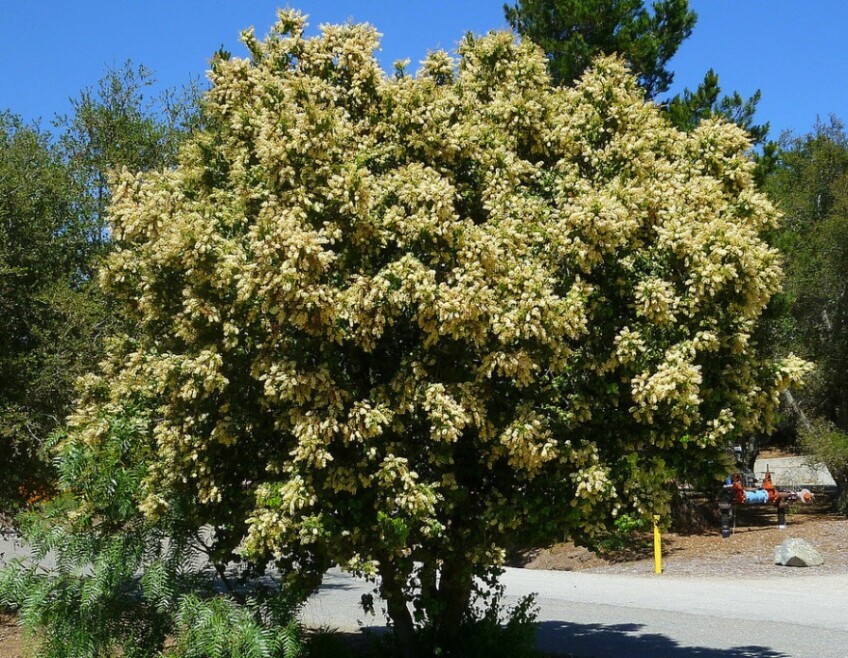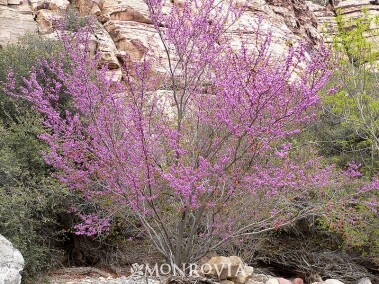Five California Native Trees That are Easy on the Eyes and Easy on Your Water Bill
There’s nothing like going native if you want to minimize problems and reduce water use. Here are five trees that you might consider. At the end of each description you’ll find a link to the “Be Water Wise” site that has more information on that particular tree. (You can also search that site for dozens of other water-wise tree descriptions.)
All these trees are drought tolerant. But remember trees are drought tolerant after they are established. So give them plenty of water when they are young, about once a week for their first three years. Then less once they are established. But don’t think that drought tolerant means no watering needed. They are after all trees.

This medium size native tree is sometimes described as a shrub. It’s a fast grower. Its height can be as low as 15 feet (shrub) to 40 feet high (tree). It has white flowers in the spring and edible cherries in the fall. And it attracts butterflies, birds and has nice scent. The leaves are dense so they provide nice shade.

This is a box elder in the fall. This large tree does better in the shade vs full sun. It’s pretty tall, growing quickly to 30’ to 50’ high. It’s a hardy shade tree during the summer. It’s deciduous, but you’ll get some nice yellow-green leaves before they fall off. There’s also a flamingo version of this with pink blossoms if you prefer.

If you love color check out the magenta blossoms of the Western Redbud in the spring. In the fall it delivers yellow and red colors. Not surprisingly hummingbirds and butterflies like it a lot. It’s called a shrub, but it grows about 10 to 20 feet high and about 10-15 feet wide growing at a moderate pace. It prefers partly sunny spots. It can also handle sandy soil.

This is a medium sized tree that you often see in parking lots or median strips because they are hearty. They like partial sun and sandy soil. They grow fast, up to 50 feet high and 60 feet wide. It’s a deciduous tree with the leaves turning a bright yellow—as in the photo-- before they drop.

If you want a pyramid shaped evergreen tree that gives good shade, check out the Incense Cedar. It grows to a very tall 200 feet. So don’t plant it under telephone poles or wires. Its trunk can grow to be 10 feet in diameter. Its bark is a nice reddish brown color. It likes clay soil. Its wood is good for pencils because it doesn’t have splinters. But in your yard it’s better as a big shade tree.
You may be a little frustrated by not finding these trees at traditional nurseries. A great place to check out is the non-profit Theodore Payne Nursery. It carries only native plants and trees. Here’s link directly to their inventory page. Look in the left column for “T” which means tree: http://theodorepayne.org/nursery/inventory/
This story is part of a special report exploring tree canopies in Southern California. Learn more about tree canopy coverage and what local organizations are doing to encourage communities to participate in tree planting initiatives at kcet.org/treecanopies. Catch the full episode on Wednesday, April 20, 2016 at 8 p.m. The video will be available online shortly after the broadcast. Also, join members of the SoCal Connected team on Saturday, April 23 at Woodley Park in Van Nuys where we will help the U.S. Forest Service plant trees. It’s part of a study to find out what types of trees survive best in Southern California. For more info, click here.